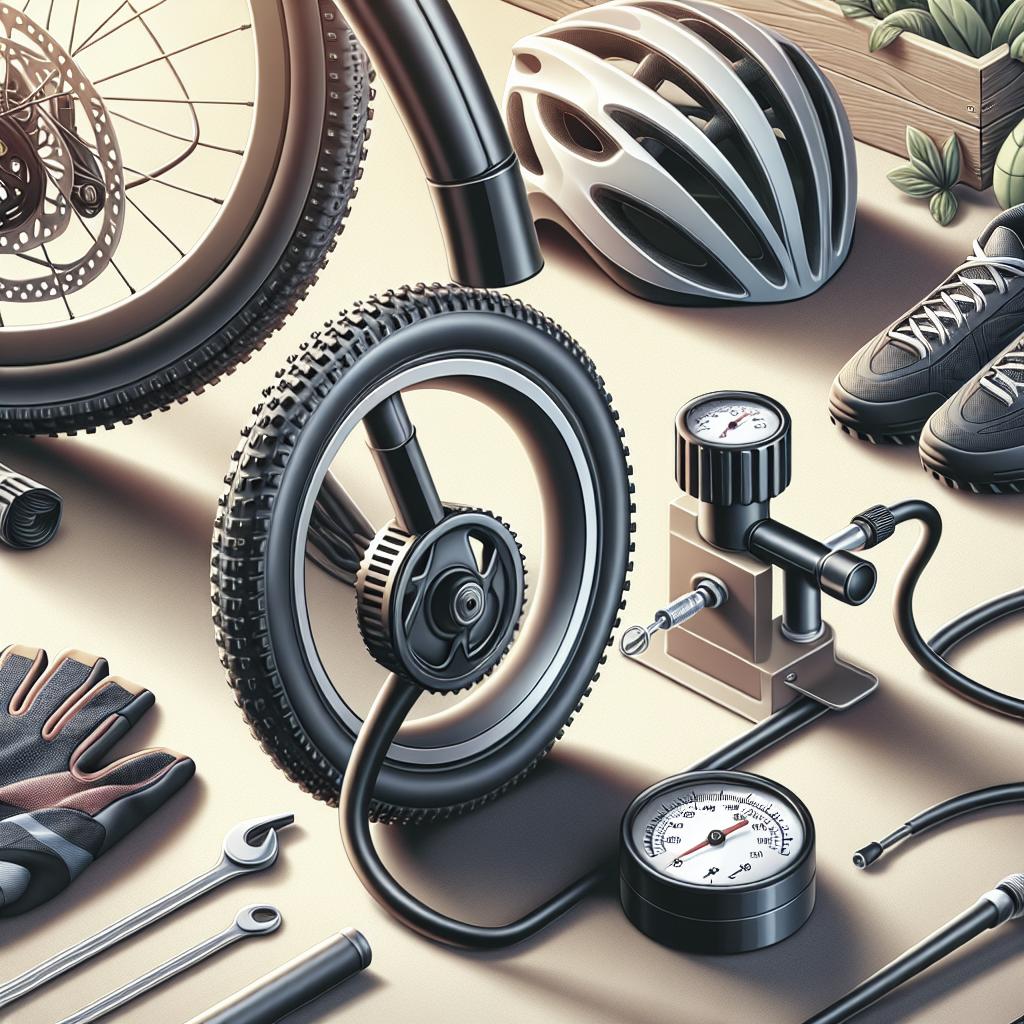“`html
How to Inflate Bike Tires Correctly
Ensuring your bike tires are properly inflated is a fundamental aspect of bike maintenance that significantly affects ride quality, safety, and efficiency. This comprehensive guide covers the essential aspects of bike tire inflation, including understanding the importance of well-inflated tires, recognizing trends in tire technology, and performing a quick test to determine your tires’ readiness for the road. We provide a detailed, step-by-step guide on how to inflate your bike tires correctly, helping you maintain your wheels in optimal condition and ensuring each ride is as smooth and safe as possible. Let’s dive into the details.
The Importance of a Properly Inflated Set of Tires
A well-inflated tire is crucial not only for optimal performance but also for safety. Proper tire pressure ensures better handling and reduces the risk of flats caused by pinch punctures. When your tires are under-inflated, more of the tire surface is in contact with the road, increasing rolling resistance, slowing you down, and requiring more effort to pedal.
Conversely, over-inflation can make for a bumpier ride and increase the chances of a blowout, especially on rough terrain. The right pressure facilitates a comfortable ride and ensures that the tire tread maintains appropriate contact with the surface, optimizing traction. Maintaining the right tire pressure increases the longevity of your tires and improves your overall riding experience.
Tire Trends Change With Time
Advances in tire technology have made selecting the proper tire pressure more nuanced than simply adhering to the printed pressure range on the tire’s sidewall. Wider tires, for example, have become a popular trend offering better comfort and performance on a variety of surfaces. With these, lower pressures are acceptable and often preferable for a smooth ride.
Moreover, tubeless tire technology is becoming more prevalent. These tires can be ridden at even lower pressures than traditional clinchers without risking pinch flats, offering yet another layer of complexity and opportunity for optimal tire performance. Keeping up with such trends allows cyclists to adjust their maintenance strategy for better output from their bikes.
A Quick Test To Make Sure Your Tires Are Road Ready
Performing a quick tire pressure test before every ride can prevent headaches and potential accidents down the road. Begin with a visual inspection—if the tires appear flat when seated on the bike, it’s a clear sign they need air. Additionally, pinch the sidewalls of the tire; there should be some firmness, akin to a softened tennis ball.
For more accurate results, use a pressure gauge to measure the tire pressure. Each tire has a recommended pressure range, which can usually be found on the sidewall. Inflate your tire within this range, accounting for the terrain and your weight for optimal performance. Regular checks enable you to address any loss of pressure due to temperature changes or regular use.
Step-by-step Instructions
To start, you’ll need the appropriate pump for your valve type—either Presta or Schrader. First, remove the valve cap and check the valve for any debris that might impede inflation. With a Presta valve, you’ll also need to loosen the locknut by unscrewing it counterclockwise.
Attach the pump head firmly onto the valve, ensuring there are no air leaks by listening for escaping air. Pump to the desired pressure and, if using a gauge, verify the pressure matches your target. Upon reaching the proper pressure, detach the pump head and quickly seal the valve to prevent air from escaping. Reattach the valve cap and repeat the process for the other tire.
Consistent practice of these steps ensures your tires remain in prime condition for every ride. This simple yet effective method not only secures your safety but greatly enhances your cycling experience, making each ride more enjoyable and efficient.
Final Thoughts
| Aspect | Details |
|---|---|
| Importance | Ensures safety, optimal performance, and prolongs tire life by maintaining proper contact with the road. |
| Tire Trends | Shift towards wider and tubeless tires allows for diverse pressure settings for tailored performance. |
| Quick Test | Involves visual inspection and pressure measurement to confirm road-readiness of tires. |
| Instructions | Step-by-step guide on proper tire inflation, ensuring accurate pressure and effective sealing of valves. |
“`


